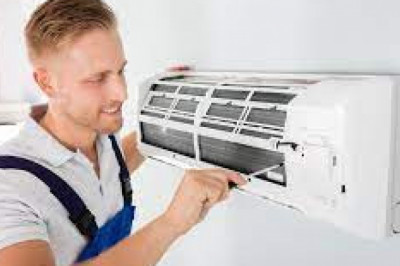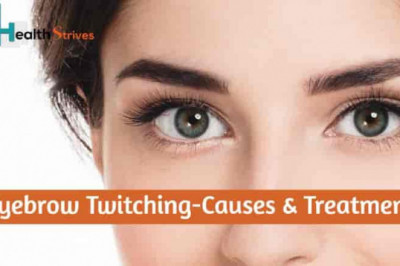views

What are calf supports or sleeves?
Calf support or sleeves are garments that help you in a variety of ways. The blood veins in the calf veins often have to work against gravity to return to the heart. This blood flow against gravity makes the veins and arteries weaker and inefficient. Calf support or compression sleeves help weaker and inefficient blood vessels to perform well.
Calf support or compression sleeves gently increase the pressure in your veins, helping improve blood flow back to the heart. This helps stimulate the circulatory system completely and, in return, ensures that calf or leg muscles have a constant flow of blood. Healthcare professionals suggest wearing calf support or compression socks for people with certain medical conditions. As well as this, people with certain family histories are also recommended to wear compression sleeves. Moreover, people who are frequent fliers, stand a lot during the day, and are over 65 are also advised to wear compression socks under certain circumstances.
Before wearing compression socks, you need to know the advantages, side effects, types, and proper way to choose and wear the compression socks. This article shows the potential details about calf support or compression sleeves you should know before wearing them.
What are the advantages of wearing calf support or sleeves
By wearing calf supports or compression sleeves, you can get a number of benefits. The following are the major benefits of wearing compression sleeves:
1. Improve athletic performance
Wearing calf muscle support sleeves helps provide proper support to your calves, helping reduce vibration and friction of muscles and ligaments. This support improves mechanical efficiency. Consequently, athletes may feel less wear and tear on muscles while performing repetitive movements. Sportspeople have recognized the benefits of wearing calf compression sleeves to improve blood flow during physical activities. The faster oxygen delivery to muscle cells may result in greater athletic activities. However, no study has shown that wearing compression sleeves positively impacts performance.
2. Reduce the chances of injuries
Wearing compression socks helps keep the calf muscles more stable, causing the calf to shake less sideways. However, shaking calves can pull the tibia, causing injuries like shin splints. Wearing compression sleeves also helps keep your muscles warm during exercises and other physical activities. Warmed muscles have better blood flow and have minor chances of injuries and fatigue. When you run in colder temperatures, wearing the best calf supports for running may benefit your practice. Wearing compression sleeves also helps prevent calf strain and calf re-injuries.
3. Reduce pain and swelling
As they apply gentle pressure to the calves, calf supports or sleeves help reduce pain and swelling from the calves. However, you should know the best time to wear compression sleeves to get maximum benefits.
4. Speed up the recovery process
The basic purpose of compression sleeves is to provide gentle pressure to the legs or calves, helping improve blood flow. The improved blood flow helps speed up the recovery process following a calf injury. As well as this, wearing the best calf supports also helps promote healing after surgery.
Side effects of wearing calf support or sleeves
Indeed, wearing calf support of compression sleeves helps in a variety of ways. However, when not worn correctly or under certain circumstances wearing calf compression socks may be harmful. The following are the potential side effects that appear while wearing the calf support or compression sleeves:
1. Cut off circulation
The primary function of wearing compression sleeves is to provide continuous pressure, helping support circulation. However, they may have some adverse effects when not fitted properly, such as preventing blood from circulating in your legs.
2. Chafing and bruising
People with dry skin or travelling in an environment with dry air may experience skin chafe or scrape. People with compromised skin barriers may experience bruises, cuts, and scrapes from compression sleeves. However, there are fewer chances of chafing or bruising when worn correctly.
3. Itching, redness, and irritations
Itching and skin irritations are some problems that may also be aggravated when wearing compression socks. You may also experience redness and dents in your skin when you wear them improperly. The redness and dents usually appear at the edge of the socks’ fabric.
Types of calf support or sleeves
Today, calf support or compression sleeves are designed in different types. the following are the common types of calf support or compression sleeves:
1. Nonmedical calf support
Nonmedical calf supports are the basic type of compression sleeves. These compression sleeves are available for anyone to buy. However, compression sleeves are available in different compression levels. However, these compression sleeves are designed in various sizes, patterns, and fabrics.
2. Graduated compression socks
Graduate compression sleeves are only available after the prescription of healthcare professionals. These types of sleeves require proper fitting to get maximum benefits. Otherwise, they may be harmful to you. It is advisable to ask your healthcare providers the best time and duration to wear graduate compression sleeves.
3. Anti-embolism compression sock
Anti-embolism compression sleeves or stocks are prescribed for people at high risk for pulmonary embolism. Usually, this type of garment is recommended for people with limited mobility.
How to choose the best calf supports or sleeves
Quality: While buying compression sleeves, you should never compromise the quality of the product or fabric. Ensure that the compression sleeves are durable because bad quality stuff can irritate you.
Size: Always wear the compression sleeves or calf support in proper size. Remember that wearing ill-fitted or poor fitted compression sleeves can cause skin problems. Ensure that your calf support or compression sleeve is snug enough to provide needed compression and support.
Material: Calf supports or compression sleeves are designed in different fabrics or materials. Consult your healthcare provider if your skin is allergic to any stuff or material.
Compression level: Calf supports or compression sleeves are designed in different compression levels. Usually, the compression level ranges from 10 to 30 mmHg. Ask your GP or healthcare professional to choose the best compression level according to your needs.
Buy the best calf supports or sleeves
If your healthcare professionals recommend you to wear calf support or compression sleeves to help manage calf pain and other symptoms, you must wear them. However, before wearing calf support, you need to know the exact type and duration of wearing calf support. As well as this, you should also know the advantages and disadvantages of wearing calf compression sleeves. Almost all the potential advantages and disadvantages are disclosed here. At 360 relief, you can find a variety of the best calf supports or compression sleeves to help manage your calf issues.












Comments
0 comment